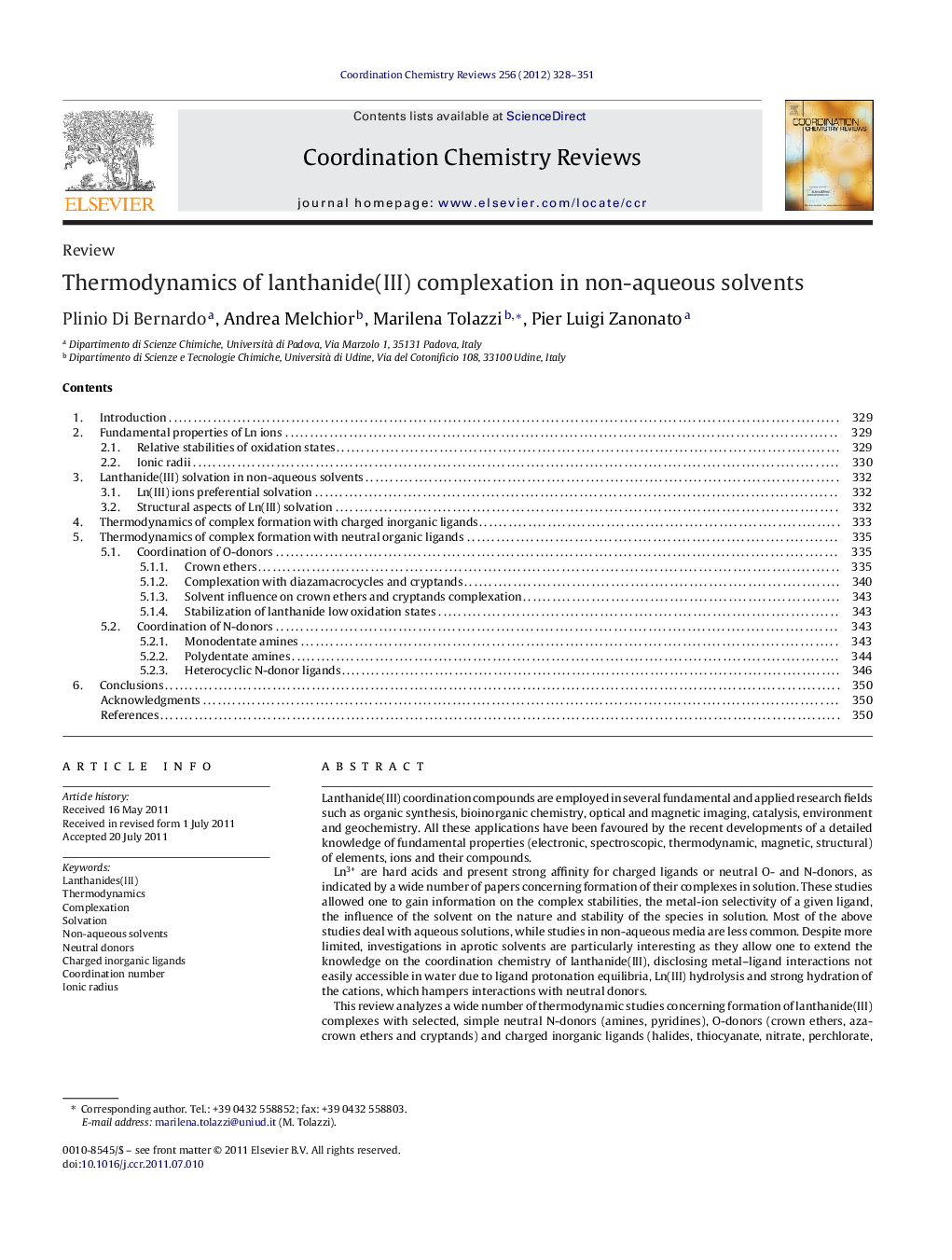| کد مقاله | کد نشریه | سال انتشار | مقاله انگلیسی | نسخه تمام متن |
|---|---|---|---|---|
| 1299148 | 1498775 | 2012 | 24 صفحه PDF | دانلود رایگان |

Lanthanide(III) coordination compounds are employed in several fundamental and applied research fields such as organic synthesis, bioinorganic chemistry, optical and magnetic imaging, catalysis, environment and geochemistry. All these applications have been favoured by the recent developments of a detailed knowledge of fundamental properties (electronic, spectroscopic, thermodynamic, magnetic, structural) of elements, ions and their compounds.Ln3+ are hard acids and present strong affinity for charged ligands or neutral O- and N-donors, as indicated by a wide number of papers concerning formation of their complexes in solution. These studies allowed one to gain information on the complex stabilities, the metal-ion selectivity of a given ligand, the influence of the solvent on the nature and stability of the species in solution. Most of the above studies deal with aqueous solutions, while studies in non-aqueous media are less common. Despite more limited, investigations in aprotic solvents are particularly interesting as they allow one to extend the knowledge on the coordination chemistry of lanthanide(III), disclosing metal–ligand interactions not easily accessible in water due to ligand protonation equilibria, Ln(III) hydrolysis and strong hydration of the cations, which hampers interactions with neutral donors.This review analyzes a wide number of thermodynamic studies concerning formation of lanthanide(III) complexes with selected, simple neutral N-donors (amines, pyridines), O-donors (crown ethers, aza-crown ethers and cryptands) and charged inorganic ligands (halides, thiocyanate, nitrate, perchlorate, triflate) in non-aqueous solvents. The main aim of the review is to face the basic question of what are the factors governing the complex stability and selectivity within the lanthanide series and how are they influenced by different coordinating media. Fundamental properties of Ln ions, such as ionic radii, common oxidation states and structural aspects of their solvates are as well analyzed.Several points emerged from a critical analysis of the papers reviewed:i)Ln3+ salts used in thermodynamic studies in poor coordinating solvents are often not completely dissociated and, in this case, the data obtained reflect multiple simultaneous equilibria in solution. Comparisons between thermodynamic results in poor and high solvating media must be therefore regarded with caution as they may refer to different reacting metal-species, hence, to different metal–ligand equilibria.ii)High solvating aprotic media can be considered as ideal for thermodynamic studies since lanthanide(III) is only present as Ln(solv)n3+species. However, in this case, the strong solvation of Ln3+ ions hinders complex formations with weak or relatively weak donors.iii)Solvation of lanthanide(III) cations in non-aqueous solutions is generally a major factor in determining the complex stabilities which, for the different kinds of ligands examined, follow the general trend: PC > AN > MeOH > DMF > DMSO.
Journal: Coordination Chemistry Reviews - Volume 256, Issues 1–2, January 2012, Pages 328–351